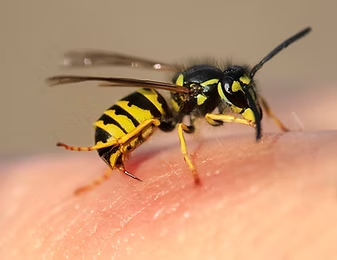
• Reliable And Trustworthy
• Responsive Proactive Solutions
• Detail-focused for lasting results
EXCELLENTTrustindex verifies that the original source of the review is Google. Great communication, on time, pleasant and thorough. Highly recommend.Posted onTrustindex verifies that the original source of the review is Google. Adam was extremely efficient in his work at our home. He provided follow up messages to confirm the inspection date & arrived on time. Adam explained all the details involved with the pest inspection & the expected timeframe. Once the work was completed, Adam called & discussed his report & outcomes. I felt completely comfortable with Adam being in our home & he has a quiet yet confident manner. I can highly recommend Adam for any pest inspection required.Posted onTrustindex verifies that the original source of the review is Google. Can't recommend Adam and his team enough, they were super reliable and carried out their work with utmost professionalism. Thank you again for taking car of my mother in laws place, we will definitely be using you again! 🙂Posted onTrustindex verifies that the original source of the review is Google. I would highly recommend Adam at Vital Pest Control for his friendly customer service, extensive knowledge and fantastic and thorough work. We have used Vital Pest Control for a few years and are always very happy with the quality and longevity of the spray. Adam is always happy to provide information about service and products and is on time and efficient.Posted onTrustindex verifies that the original source of the review is Google. As a first time home buyer we used Adam prior to us moving in He was prompt, thorough, professional and easy to work with Can 100% guarantee I will be using him againPosted onTrustindex verifies that the original source of the review is Google. Adam was amazing very professional he explained everything and was very thorough taking great care in providing a professional service. I would highly recommend.Posted onTrustindex verifies that the original source of the review is Google. Have used well known pest contoll for over ten years. Recently standard of their work had fallen. Rang adam at vital pest control. Could not reccomend him highly enough. Thankyou adam and we will see you in twelve months. Mark and julie hillPosted onTrustindex verifies that the original source of the review is Google. Quick reliable service, highly recommend looking fwd to our next annual servicePosted onTrustindex verifies that the original source of the review is Google. Punctual, good job done & very friendly service.Posted onTrustindex verifies that the original source of the review is Google. Highly recommend. Turned up on time and provided a great and efficient service. We are due for another spray soon and will definitely get them back as we haven’t had a pest issue since the last visit.
Welcome to Wasp Control On The Central Coast NSW, where we manage pests effectively and safely. At Vital Pest Control, we prioritise your safety with our expert services.
Wasp Nest Identification
Recognising a wasp nest early is crucial for effective control. Nests often appear as paper-like structures. Identifying them quickly ensures a proactive approach. This helps in managing the potential risk before it escalates. Our expertise allows us to spot nests in tricky spots.
Paper Wasps vs. European Wasps
Understanding the difference between paper wasps and European wasps is vital. Paper wasps have slender bodies, while European wasps are stockier. Both types can pose threats, but the treatment differs. Tailored solutions ensure effective wasp control on the Central Coast NSW.
Safe Wasp Nest Removal
Removing a wasp nest safely prevents further issues. Our team uses careful methods to ensure nests are handled without harm. Protect your family and pets by letting us manage wasp nests. Safety is our top priority during removal.
Protective Pest Control Equipment
Our professionals use state-of-the-art protective gear. This ensures safety during wasp eradication. The right equipment allows for effective and secure pest management. Trust our team for reliable and trustworthy services.
Wasp Eradication
Effective wasp eradication requires precision and knowledge. Our methods are detail-focused for lasting results. We ensure wasps are completely removed, preventing future infestations. Count on us for responsive proactive solutions.
Wasp Stings & Allergies
Wasp stings can cause severe allergic reactions. Immediate action is essential to minimise risk. Our services help reduce exposure to wasp stings. Protect your health with our expert guidance and support.
Discover how we can help you today! Reach out through our Contact page.
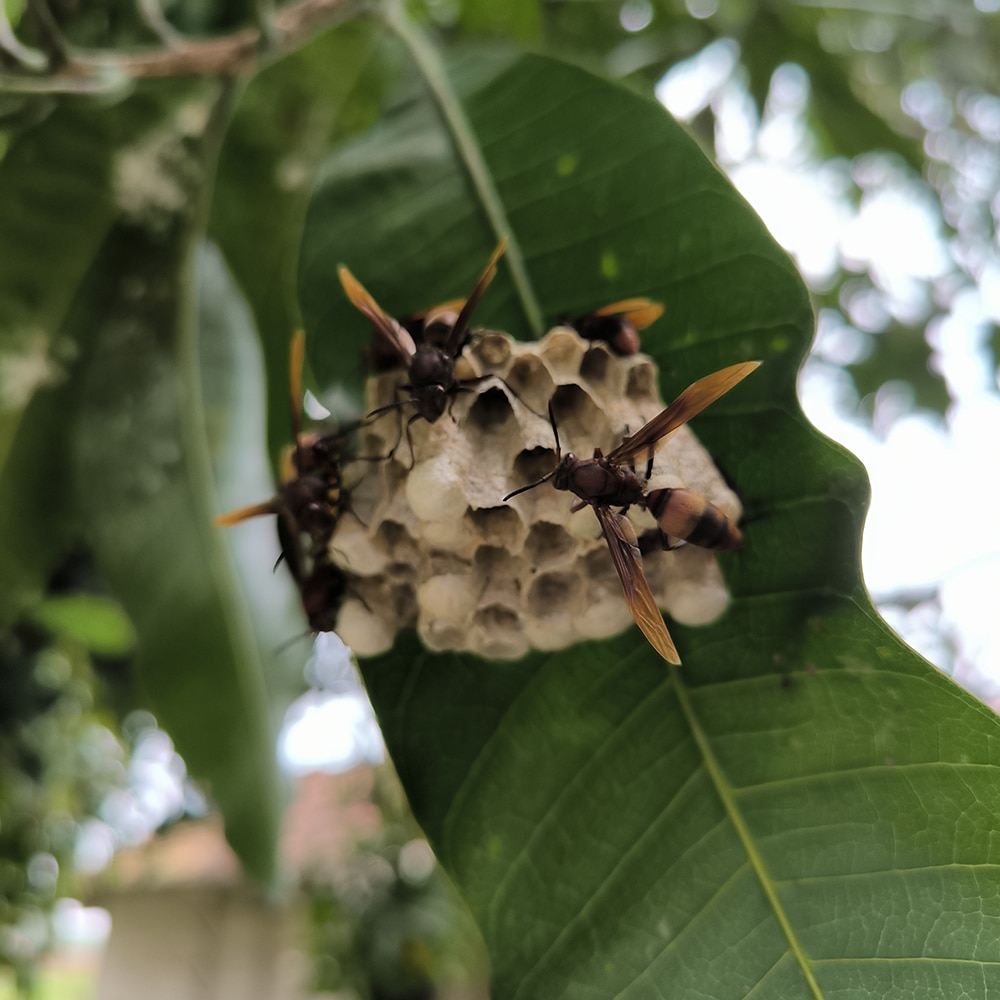
Struggling with wasp nests? Discover effective wasp control on the Central Coast NSW with Vital Pest Control.
Wasps can be a nuisance on the Central Coast of NSW. Knowing how to identify their nests is key to managing them effectively. Understanding their appearance, location preferences, and behaviours can help in addressing potential infestations before they become a problem.
Recognising Wasp Nest Types
Wasp nests vary in shape, size, and construction materials. Paper wasps build exposed, umbrella-shaped nests with a honeycomb appearance. These nests often hang from eaves or tree branches. European wasps, on the other hand, construct nests that are hidden and spherical. They use chewed wood pulp, creating a papery texture. These nests may be found underground or in wall cavities.
Preferred Nesting Locations
Wasps favour sheltered locations that offer protection from the elements. On the Central Coast, you might find nests under roof eaves, in garden sheds, and within dense shrubbery. They tend to avoid open spaces, opting for hidden areas that provide safety and warmth. Observing wasp flight patterns can lead you to their nests.
Behavioural Indicators
Wasps are generally more active during warmer months. Increased wasp activity around specific areas of your property can be a sign of a nearby nest. Wasps often follow fixed flight paths to and from their nests, creating a visible trail in the air. Listening for persistent buzzing can also help in locating their nests.
Safety Precautions
Approaching wasp nests requires caution, as wasps can become aggressive if they feel threatened. It is advisable to observe from a distance and avoid sudden movements. If you suspect a wasp nest on your property, consider contacting pest control professionals who have the expertise and equipment to handle the situation safely.
Preventing Wasp Infestations
Preventive measures can reduce the likelihood of wasp nests forming. Regularly inspect potential nesting sites around your home. Seal any gaps or crevices in walls and rooflines. Keep food sources, like open rubbish bins or pet food, covered. These steps can make your property less attractive to wasps.
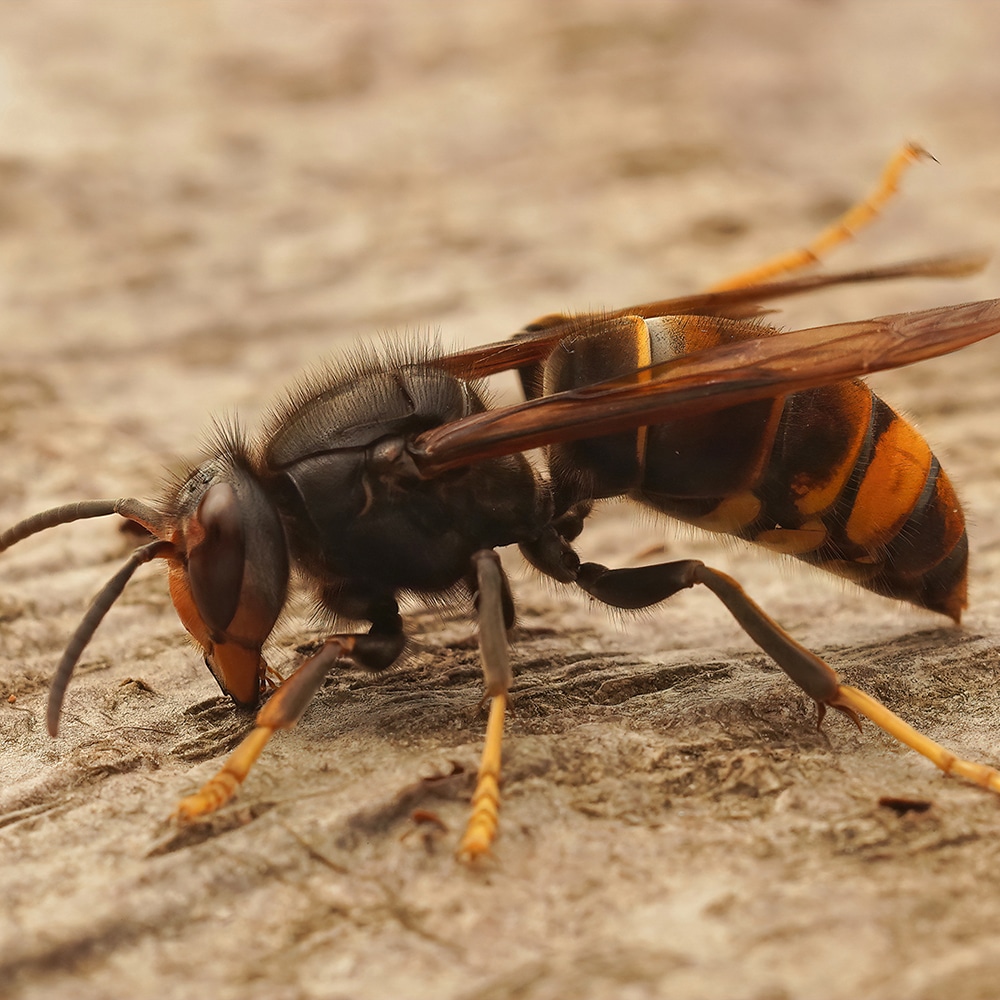
Struggling with wasp invasions? Discover expert wasp control on the Central Coast NSW today.
On the Central Coast NSW, locals often encounter two common types of wasps: paper wasps and European wasps. These insects might look similar at first glance, but they have distinct behaviours and characteristics. Understanding these differences can help residents manage and control wasp populations effectively.
Appearance and Identification
Paper wasps and European wasps differ in appearance, making identification easier for those familiar with their traits. Paper wasps have slender bodies with long legs that hang while flying. Often, they display reddish-brown or yellow markings. In contrast, European wasps have stockier bodies, resembling bees, with bright yellow and black stripes. Noticing these physical distinctions is key in identifying the type of wasp you’re dealing with.
Nesting Habits
The nesting habits of these wasps also set them apart. Paper wasps construct open, umbrella-shaped nests made from a papery substance. These nests are often found under eaves, branches, or other sheltered spots. Meanwhile, European wasps build enclosed nests, usually underground or in wall cavities. Their nests are large and can house thousands of wasps, making them more aggressive in defending their territory compared to paper wasps.
Behaviour and Aggression
When it comes to behaviour, paper wasps are generally less aggressive unless provoked. They tend to avoid conflict with humans and focus on hunting caterpillars and other insects. On the other hand, European wasps are more aggressive, especially when their nests are disturbed. They can sting multiple times, which poses a threat to humans and pets. This aggressive nature requires careful handling and professional removal if necessary.
Impact on the Environment
Both wasp species have roles in the ecosystem, though their impacts differ. Paper wasps contribute positively by controlling pest populations, as they prey on caterpillars and other insects. European wasps, however, can disrupt local ecosystems. Their aggressive feeding habits compete with native species for food and can lead to imbalances. Managing European wasp populations is crucial to protecting native fauna and maintaining ecological balance on the Central Coast.
Understanding the differences between paper wasps and European wasps is essential for Central Coast residents. Recognising their appearance, nesting habits, and behaviour helps in determining the best approach to manage these wasps. Seeking professional assistance for European wasp infestations is often necessary due to their aggressive nature and potential harm to humans and pets.
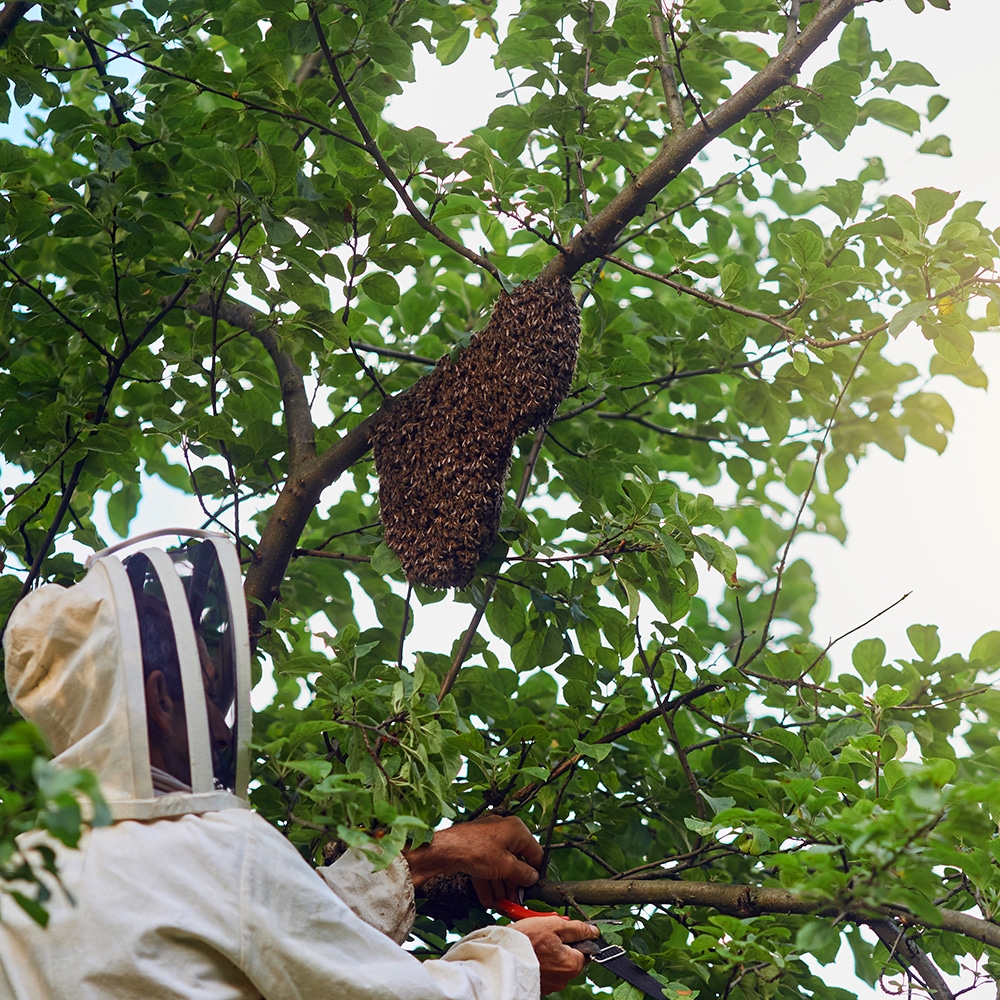
Struggling with a wasp invasion? Discover effective wasp control on the Central Coast NSW with Vital Pest Control today.
Wasp nests can be a significant concern for residents on the Central Coast, NSW. These nests not only pose a threat to personal safety but can also be disruptive to daily activities. Understanding the best practices for safe wasp nest removal is crucial for maintaining a peaceful environment. This guide explores effective and secure methods to handle wasp nests, ensuring minimal risk to you and your surroundings.
Recognising the Threat of Wasps
Wasps are territorial creatures that can become aggressive if they feel threatened. On the Central Coast, common types include European wasps and paper wasps. Identifying the species is vital, as each may require different handling techniques. Observing from a distance and noting the wasp’s colour and size can help in recognising the threat and planning the appropriate response.
Assessing the Nest Location
Before attempting removal, it’s important to assess where the wasp nest is located. Nests can be found in various spots such as roof eaves, tree branches, or even underground. Knowing the location helps in determining the safest approach for removal. Difficult-to-reach nests might require professional assistance, ensuring safety and effectiveness.
Using Protective Gear
Using protective gear is essential when dealing with wasp nests. Wearing thick clothing, gloves, and a mask can prevent painful stings. A full-body suit designed for pest control offers optimal protection. This gear not only shields you from stings but also builds confidence in handling the task at hand.
Choosing the Right Time for Removal
Timing is key when it comes to wasp nest removal. Early morning or late evening are the best times, as wasps are less active. Cooler temperatures mean fewer wasps flying around, reducing the chances of being stung. Planning removal during these times maximises safety and effectiveness.
Employing Safe Removal Techniques
Several safe techniques exist for wasp nest removal. Using a pesticide spray specifically designed for wasps is one effective method. Ensure you follow the instructions carefully to avoid harm. For more environmentally friendly approaches, consider using natural solutions like peppermint oil or vinegar, which can deter wasps without chemical exposure.
Considering Professional Help
If the nest is too large or in a difficult location, it may be best to hire professionals. Pest control experts have the experience and equipment to safely remove wasp nests. They ensure the job is done efficiently, reducing the risk of injury. This option is particularly beneficial for those who are allergic to wasp stings or uncomfortable handling the situation themselves.
Preventing Future Infestations
To prevent future wasp infestations, consider regular inspections of your property. Sealing entry points and removing food sources can deter wasps from building nests. Maintaining a clean environment and using wasp deterrents like traps or specially designed plants can help keep these pests at bay.
Adam Sands - Licenced Pest Technician
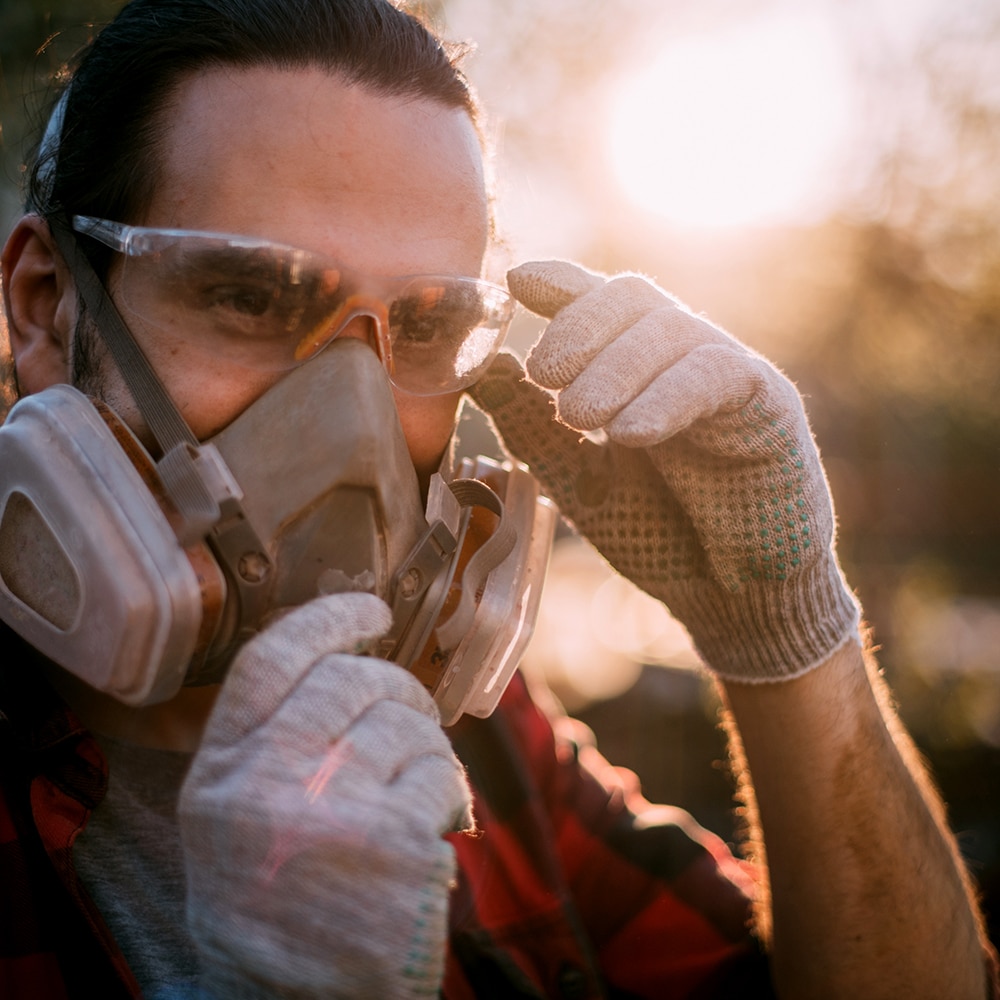
Are you seeking effective wasp control on the Central Coast NSW to safeguard your home? Protect your loved ones from stings with expert pest solutions nearby.
The Central Coast of NSW is a vibrant region with a unique blend of urban areas and natural landscapes. This diverse environment can attract a variety of pests, making protective pest control equipment essential for both residential and commercial properties. Understanding the right tools and methods to use can significantly impact the effectiveness of pest control efforts in this area.
Essential Protective Gear for Pest Control
When dealing with pests, safety should always be a top priority. Essential protective gear includes gloves, masks, and coveralls. These items help protect the skin and respiratory system from harmful chemicals and bites. On the Central Coast, where temperature and humidity can be high, breathable materials are preferable to ensure comfort during prolonged tasks. Choosing the right protective gear ensures that pest control tasks are carried out safely and efficiently.
Effective Pest Control Sprayers
Pest control sprayers are crucial for applying pesticides effectively. On the Central Coast, where gardens and outdoor spaces are common, having a reliable sprayer is vital. Handheld and backpack sprayers offer versatility and precision, allowing users to target specific areas. It’s important to select sprayers made from durable materials to withstand frequent use and exposure to various chemicals. Regular maintenance and cleaning of sprayers ensure their longevity and optimal performance.
Traps and Monitoring Devices
Traps and monitoring devices play a crucial role in pest management on the Central Coast. They help identify and control pest populations before they become a significant issue. Sticky traps, bait stations, and electronic monitoring systems offer different approaches to pest detection and capture. Using these devices can prevent infestations and minimise the need for chemical treatments. Being proactive with traps and monitoring can significantly reduce the risk of pest problems.
Protective Storage and Handling Solutions
Proper storage and handling of pest control chemicals are essential to ensure safety and effectiveness. On the Central Coast, where temperatures can fluctuate, it’s important to store chemicals in cool, dry places away from direct sunlight. Secure storage solutions like lockable cabinets and designated shelving prevent accidental exposure and spills. Proper labelling and adherence to safety guidelines ensure that chemicals are used correctly and safely.
Training and Safety Procedures
Equipping oneself with the right knowledge is as important as having the right equipment. Training in safety procedures and equipment use is crucial for effective pest control on the Central Coast. Understanding the local pest landscape and the appropriate responses can make a significant difference in results. Workshops and online courses provide valuable insights into modern pest control techniques and safety measures, ensuring a well-rounded approach to managing pests.
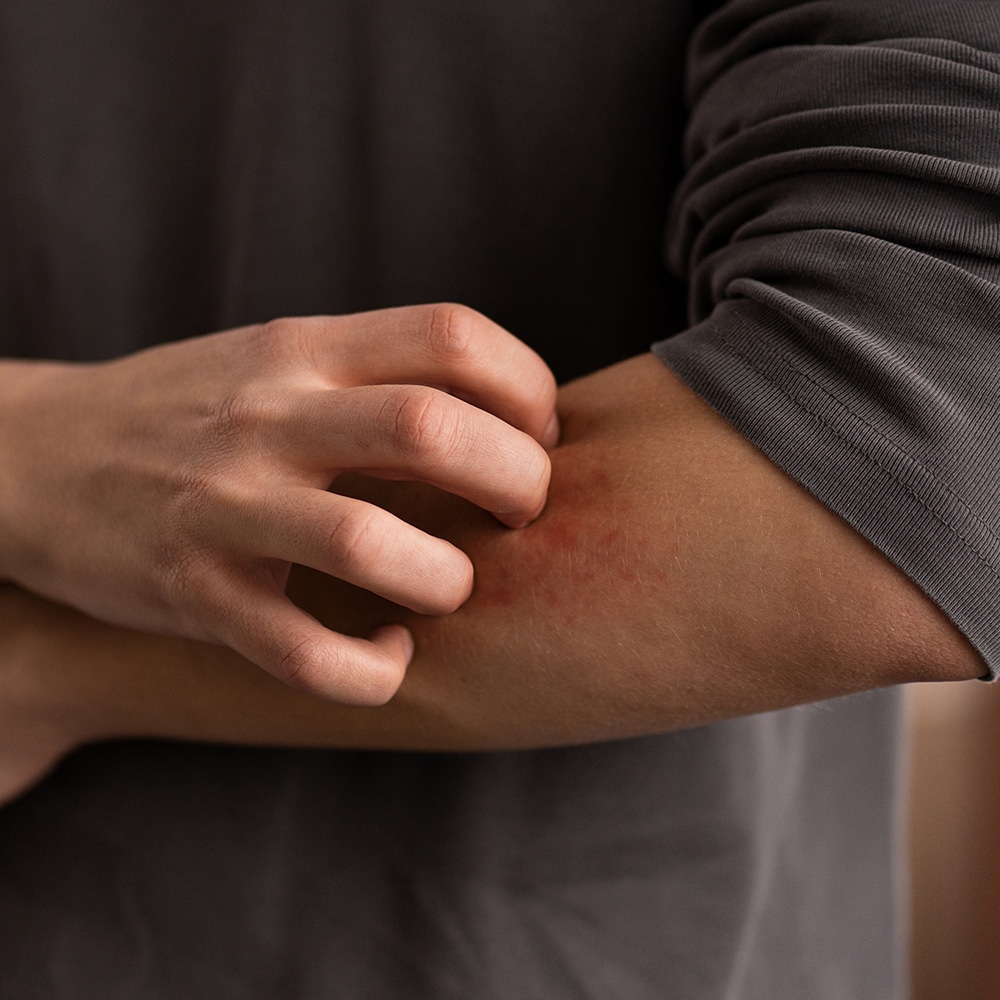
Struggling with wasp invasions? Discover top-notch wasp control on the Central Coast NSW with Vital Pest Control.
Wasp infestations can be a real nuisance on the Central Coast, NSW. These buzzing pests not only disrupt outdoor activities but can also pose health risks with their stings. Understanding effective wasp eradication methods can help keep your home and garden safer and more enjoyable.
Identifying Wasp Species
Different species of wasps frequent the Central Coast, including European wasps and paper wasps. Recognising the specific type of wasp is crucial for effective eradication. European wasps, often found swarming around food, have distinctive yellow and black markings. In contrast, paper wasps are slimmer with a more reddish-brown hue. Correctly identifying the species helps in choosing the most appropriate control method.
Locating Nests
Finding the wasp nest is the first step in tackling an infestation. Nests are often built in sheltered spots like roof eaves, garden sheds, or dense shrubbery. Observing the flight patterns of wasps during the day can lead you directly to their nest. Once located, it’s crucial to plan its removal carefully, considering potential safety risks.
Safe Eradication Methods
When it comes to wasp eradication, safety should be a priority. For small nests, wasp sprays can be effective. These are best applied in the evening when wasps are less active. For larger infestations, seeking professional pest control services is advisable. Experts have the necessary equipment and knowledge to handle nests safely and effectively, reducing the risk of stings.
Preventative Measures
Preventing future wasp problems involves regular checks and maintenance. Sealing cracks and holes in walls or roofs can deter wasps from nesting. Keeping outdoor areas clean and free of food scraps also helps. Regularly trimming trees and shrubs can reduce nesting sites, making your property less attractive to wasps.
Health Risks and First Aid
Wasp stings can cause severe allergic reactions in some individuals. Knowing the first aid steps is vital. If stung, applying ice can reduce swelling. For those with known allergies, carrying an epinephrine injector is crucial. In severe cases, seeking immediate medical attention is necessary. Being prepared ensures that any encounter with wasps is managed safely.
By taking proactive steps and understanding effective wasp eradication strategies, residents on the Central Coast can enjoy their outdoor spaces without the worry of wasp invasions.
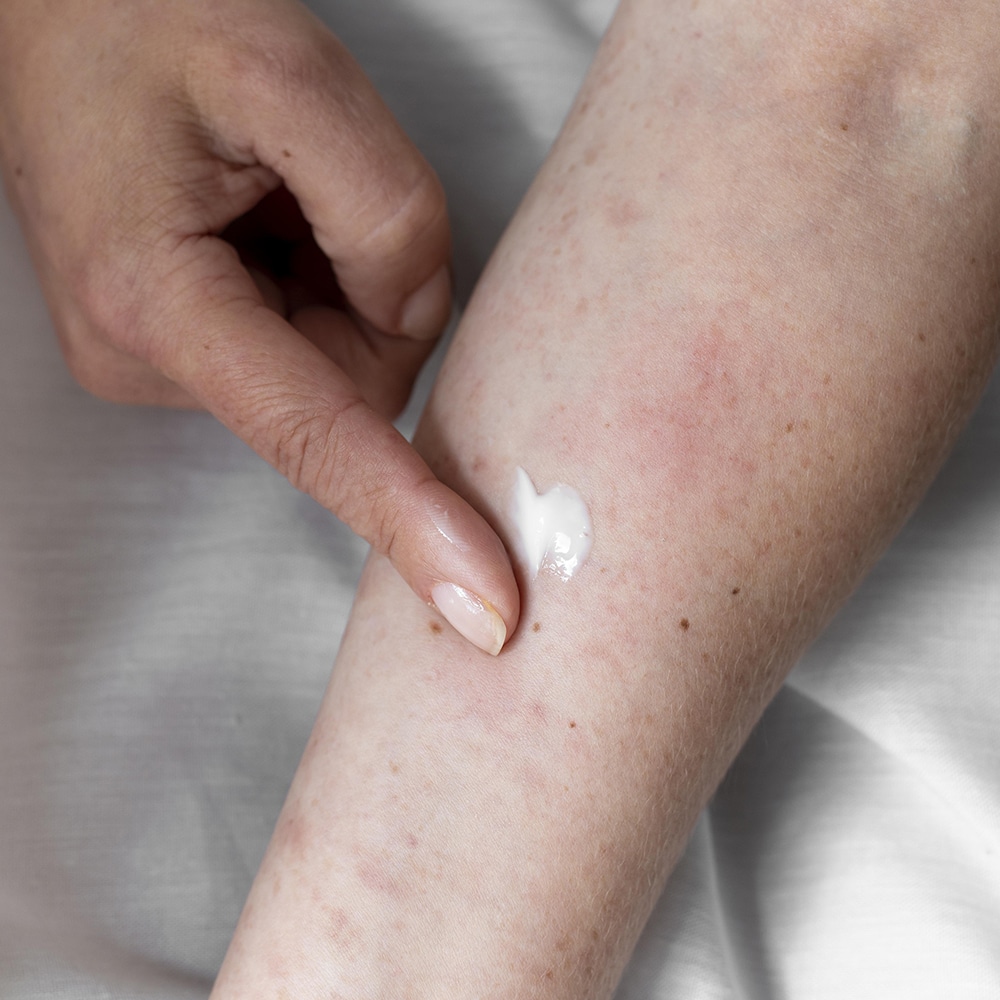
Struggling with wasp stings? Vital Pest Control offers expert wasp control on the Central Coast NSW, ensuring your safety.
On the Central Coast of NSW, the warm climate and lush landscapes create an ideal environment for wasps. While these insects play a role in natural pest control, their stings can lead to discomfort and, for some, serious allergic reactions. Understanding wasp stings and allergies is crucial for residents in this region.
Recognising Wasp Stings
Wasp stings can occur swiftly and unexpectedly. Unlike bees, wasps can sting multiple times, injecting venom that causes immediate pain. Stings typically result in redness, swelling, and itching at the site. In most cases, these symptoms resolve in a few hours. However, repeated stings or stings near sensitive areas like the face can lead to more pronounced reactions.
Identifying Allergic Reactions
While many people experience mild reactions to wasp stings, some may develop allergic responses. Allergic reactions can range from mild to severe. Symptoms like widespread itching, hives, and difficulty breathing indicate a serious condition known as anaphylaxis. This requires immediate medical attention. People with known allergies should carry an epinephrine auto-injector and seek medical advice regarding long-term management.
Prevention Tips for Residents
Preventing wasp stings involves being mindful of their habitats. Wasps build nests in sheltered areas such as roof eaves, garages, and trees. Regular inspections around the home can help identify and safely remove nests. When outdoors, avoid wearing bright colours and using strong fragrances, as these can attract wasps. Eating or drinking sweet foods outside also increases the risk of attracting these insects.
Managing Wasp Stings
Immediate action following a wasp sting can reduce discomfort. Wash the area with soap and water to remove venom traces. Applying a cold pack can minimise swelling and relieve pain. Over-the-counter antihistamines may help reduce itching and swelling. If symptoms worsen or if there’s any concern about an allergic reaction, seeking prompt medical advice is essential.
Local Resources and Support
On the Central Coast, several resources can assist with wasp-related issues. Local pest control services offer guidance and removal of wasp nests. Healthcare providers can offer advice on managing allergies and prescribing necessary medications. Community health centres may also provide information sessions on dealing with insect stings and allergies.
Please leave your details in the form and we will call you back the same day.
So that we can process your enquire efficiently please leave as many details as possible and upload any relevant images. (.jpg and .png format)

• Reliable And Trustworthy
• Responsive Proactive Solutions
• Detail-focused for lasting results
We are ready to help you with Cockroaches, Spiders, Ants, Wasps, Fleas, Termites, Rodents, and Possum Relocation.
Call Adam on 0431 222 894 for Responsive Pest Control Services on The Central Coast NSW, Newcastle and The Hunter Valley.
Homeowners Business Owners Shopping Centre Management Real Estate Agents
It may also be an urgent or time-sensitive situation.
If you have questions just reach out to Adam on 0431 222 894 and he’ll be happy to help you.
Removing wasp nests safely is crucial, especially if you’re dealing with an active nest. Wasps can become aggressive when threatened, so it’s vital to approach the task with caution. Here’s how you can tackle this problem effectively.
Identify the Nest Type
Before attempting removal, determine the type of wasp nest you’re dealing with. Some wasps are more aggressive than others. Knowing the species helps in choosing the right strategy. For example, paper wasps are generally less aggressive than hornets.
Choose the Right Time
Plan to remove the nest early in the morning or late in the evening when wasps are less active. Cooler temperatures during these times make wasps sluggish, reducing the risk of stings. Always wear protective clothing to cover exposed skin.
Use Appropriate Tools
Equip yourself with a long-reach spray designed for wasp nests. Look for products that allow for a safe distance and ensure you follow the instructions on the label. A spray with a long nozzle ensures precision while keeping you safe.
Consider Professional Help
If you’re uncomfortable with DIY removal or if the nest is in a hard-to-reach area, consider hiring professionals. Pest control experts ensure safety and efficiency, reducing risks associated with wasp stings and potential allergic reactions.
Taking these steps can help you manage wasp nests effectively. For expert guidance or to schedule a professional removal, Contact Us for assistance.
Ever wondered what sets bees apart from wasps? Though they might seem similar, these buzzing creatures have distinct differences. Understanding these nuances can help in managing your garden or dealing with unwanted visitors.
Appearance
Bees are fuzzy with a rounder body, while wasps have a sleek, narrow appearance. This difference aids their unique roles. Bees often gather pollen, whereas wasps hunt insects. Spotting these traits helps identify them easily in your backyard.
Behaviour
Bees are generally gentle and focus on pollination. Wasps, on the other hand, can be more aggressive, especially if provoked. Knowing their behaviour can guide you in safely managing encounters, reducing the risk of stings.
Nesting
Bees build hives, often in hollow trees or man-made structures. Wasps prefer paper-like nests, frequently found under eaves or in bushes. Identifying nests can be crucial in preventing infestations and protecting your outdoor spaces.
Role in Ecosystem
Both bees and wasps play pivotal roles in ecosystems, but bees are key pollinators, while wasps control pest populations. Encouraging bees enhances plant growth. Meanwhile, wasps can naturally reduce garden pests without chemicals.
Understanding these differences not only aids in garden management but also promotes a harmonious coexistence with these insects. If you need professional help with pest control, Contact Us for expert advice and solutions.
Wondering when wasp activity reaches its peak? Wasps are most active during the warmer months of late spring through summer. This is when you’ll notice them buzzing around the garden or building nests. Understanding their behaviour can help you manage potential issues effectively.
Time of Day
Wasps are typically more active during the daytime, especially in the afternoon when temperatures rise. This is when they’re out collecting food and materials. If you’re planning outdoor activities, scheduling them for the morning or evening might help avoid unwanted encounters.
Seasonal Patterns
Throughout the year, wasp activity fluctuates. They emerge in spring, become most noticeable in summer, and start to dwindle in autumn. During winter, wasps tend to be dormant. Keep an eye out for nests in spring to prevent summer swarms.
Tips for Prevention
To keep wasps at bay, regularly check for and seal any entry points in your home. Removing food scraps and covering bins can also deter them. If you find a nest, consider professional removal to ensure safety and effectiveness.
Need expert help with wasp control? Contact Us for tailored solutions to keep your space wasp-free this season.
Dealing with wasps requires the right protective gear to ensure safety. Wasps can be aggressive, and their stings are painful. Wearing the proper equipment can make a big difference in avoiding these pesky insects’ wrath. Here’s what you need to know about protective gear for handling wasps.
Protective Clothing
When tackling wasps, wear long-sleeved shirts and pants made of thick, durable material. This reduces the risk of stings penetrating the fabric. Tuck clothing into gloves or boots to cover any exposed skin. Consider wearing coveralls for full-body protection.
Gloves and Boots
Opt for heavy-duty gloves, like leather ones, to shield your hands from stings. Sturdy boots protect your feet and ankles. Make sure boots are high enough to cover your pant legs to prevent wasps from crawling inside.
Face and Eye Protection
A beekeeper’s veil or a mesh hood ensures your face and eyes remain safe. Wasps often target the face, so a protective barrier helps keep them at bay. Safety goggles or glasses add an extra layer of defence for your eyes.
Handling wasps without the right gear can be risky. Always prioritise safety when dealing with these insects. If the task feels overwhelming or dangerous, consider professional assistance. For expert help, Contact Us for safe and effective wasp control solutions.
Preventing wasps from nesting around your home can save you from unnecessary stings and stress. Taking a few proactive steps can help keep these pests at bay, ensuring that your outdoor spaces remain enjoyable and safe for everyone.
Seal Entry Points
Check your home for any gaps or cracks, especially near eaves and roof spaces. Use caulk or other sealants to close these entry points. By blocking access, you reduce the chances of wasps finding ideal nesting spots inside your home.
Remove Food Sources
Wasps are attracted to food scraps and sugary residues. Keep your outdoor dining area clean and cover bins securely. By limiting their food sources, you deter wasps from frequenting your property and considering it a suitable nesting area.
Hang Decoy Nests
Wasps avoid areas where they perceive competition. Hanging a decoy nest can trick them into thinking another colony has already claimed the area. This simple measure can be an effective deterrent, reducing the likelihood of real nests forming.
Regular Inspections
Conduct regular checks around your property, especially in warmer months when wasps are most active. Early detection of a nascent nest allows for swift removal, preventing larger colonies from establishing themselves.
Keeping your home wasp-free enhances comfort and safety. For expert assistance, Contact Us for tailored solutions and professional wasp control services.
Ever wondered why wasps love hanging around your property? It’s not just a coincidence. Understanding their attraction can help manage these pesky guests effectively.
Food Sources
Wasps have a sweet tooth. They buzz around anything sugary like fruit, drinks, or even your rubbish bin. Secure these tempting treats to keep them at bay. Keep food covered and dispose of waste promptly to reduce their attraction.
Shelter Options
Wasps seek shelter in hidden spots. Wall cavities, sheds, and eaves make perfect nesting sites. Regularly inspect these areas for signs of nests. Sealing entry points can deter wasps from setting up home.
Water Sources
Wasps are drawn to water. Birdbaths, pools, or even leaky taps can act like a magnet. Fix leaks and cover water sources when not in use to minimise their attraction.
Garden Appeal
A thriving garden often attracts wasps. They hunt insects and feed on nectar. Planting less attractive types can help, or use natural deterrents like peppermint oil to keep them away.
Managing wasps doesn’t have to be a hassle. Understanding what draws them to your property is half the battle. For expert help, Contact Us for a tailored solution.
Wondering if wasp treatments are safe for your garden? It’s a common concern for homeowners wanting to protect both their plants and their families. Let’s delve into the details to ensure your garden stays vibrant while keeping those pesky wasps at bay.
Understanding Wasp Treatments
Most wasp treatments are designed to target wasps without harming your garden. These treatments focus on nests and specific areas where wasps gather. Always follow the instructions to minimise any risk to your plants. Look for eco-friendly options if you’re concerned about garden safety.
Potential Impact in Plants
While wasp treatments are generally safe, some chemicals may cause temporary leaf discolouration. Test a small area before full application. This simple step can prevent unwanted surprises and help maintain your garden’s beauty. Consider consulting with a pest control expert if you’re unsure.
Eco-Friendly Alternatives
If you prefer natural methods, try solutions like peppermint oil or a vinegar spray. These can repel wasps effectively without affecting plant health. Setting up decoy nests also keeps wasps away, as they tend to avoid areas with existing colonies. These methods offer a green alternative.
For more tailored advice or professional assistance, don’t hesitate to Contact Us. Our team can help find the best solution for your garden’s needs.
Identifying different wasp species can be tricky, but it’s important for safety and pest control. Recognising these buzzing critters helps protect your home and reduce sting risks. Let’s explore some ways to spot the differences among various wasp species.
Colour and Patterns
Wasps display a range of colours and patterns, making it easier to identify them. Some have bright yellow and black stripes, while others might be more subdued in browns or reds. Pay attention to these markings to distinguish between species like the common paper wasp and the aggressive hornet.
Size and Shape
Consider the size and shape of the wasp. Larger wasps like hornets have robust bodies, while smaller wasps like the yellowjacket are slimmer. Their wings and antennae also vary, providing clues to their identity. Observing these features can help you correctly identify the wasp buzzing around.
Nesting Habits
Wasps build nests in various places. Paper wasps create umbrella-shaped nests in sheltered spots, while mud daubers use mud to build tube-like structures. Recognising these nesting habits helps identify the type of wasp you’re dealing with. Knowing what to look for can make all the difference.
Behaviour and Aggression
Different wasps exhibit unique behaviours. Some are more aggressive, defending their nests fiercely, while others are solitary and docile. Noticing how a wasp behaves around its environment can offer hints about its species. Understanding these behaviours can help you decide how to handle them safely.
Identifying wasps correctly can help protect your family and home. If you need assistance managing wasps or other pests, Contact Us for expert advice and support.
Stumbling upon a wasp nest can be alarming, especially if it’s near your home or garden. Wasps can be aggressive when they feel threatened, so knowing how to handle the situation carefully is essential for safety.
Identify the Nest Type
First, determine if it’s a wasp or bee nest. Wasps tend to have smooth, papery nests, often hanging from eaves or trees. Bees usually nest in cavities. Identifying correctly can help decide the best removal method.
Keep a Safe Distance
Stay away from the nest to avoid provoking the wasps. Their stings can be painful and dangerous, especially for those allergic. Encourage family and pets to steer clear while you assess the situation.
Consider Professional Help
Removing a wasp nest on your own can be risky. Professional pest control services have the expertise and equipment to handle nests safely and effectively. Hiring experts minimises the risk of stings and ensures proper removal.
Use Protective Gear
If you’re confident in tackling it yourself, wear long sleeves, pants, gloves, and a hat for protection. Use a wasp spray at dusk when wasps are less active. Approach quietly and retreat immediately after spraying.
Prevent Future Nests
Seal cracks and cover bins tightly to deter wasps from returning. Removing food sources and maintaining cleanliness can also help. Regularly inspect your property to catch any new nests early.
Need assistance with a wasp problem? It’s crucial to act swiftly and safely. For expert help, don’t hesitate to Contact Us. We’re here to provide peace of mind and ensure your space is wasp-free.
Wondering how long wasp treatment lasts? You’re not alone. Many people are curious about the effectiveness of these treatments. Let’s dive into what you can expect and some helpful tips to keep those pesky wasps at bay.
Duration of Wasp Treatment
The longevity of a wasp treatment can vary. Typically, professional treatments last a season, often between three to six months. The type of treatment and nest size play a role. Regular inspection is crucial to ensure wasps don’t return unexpectedly.
Factors Affecting Treatment
Weather conditions, wasp species, and nest location influence how effective a treatment can be. Damp environments might reduce the treatment’s effectiveness. Choosing a dry day for treatment can help maintain its potency. Tailoring the approach to your specific situation ensures better results.
Proactive Prevention Tips
Sealing entry points and removing food sources can deter wasps. Regularly inspect your home for new nests. Consider using natural deterrents like peppermint oil. Keeping your home wasp-free requires a proactive approach. These steps help reinforce professional treatments and provide peace of mind.
For a more tailored solution, reaching out to pest control experts can make a big difference. If you need more guidance on wasp treatment, feel free to Contact Us. We’re here to help you enjoy a wasp-free space all season long.
Need Some Advice From A Professional Pest Technician?